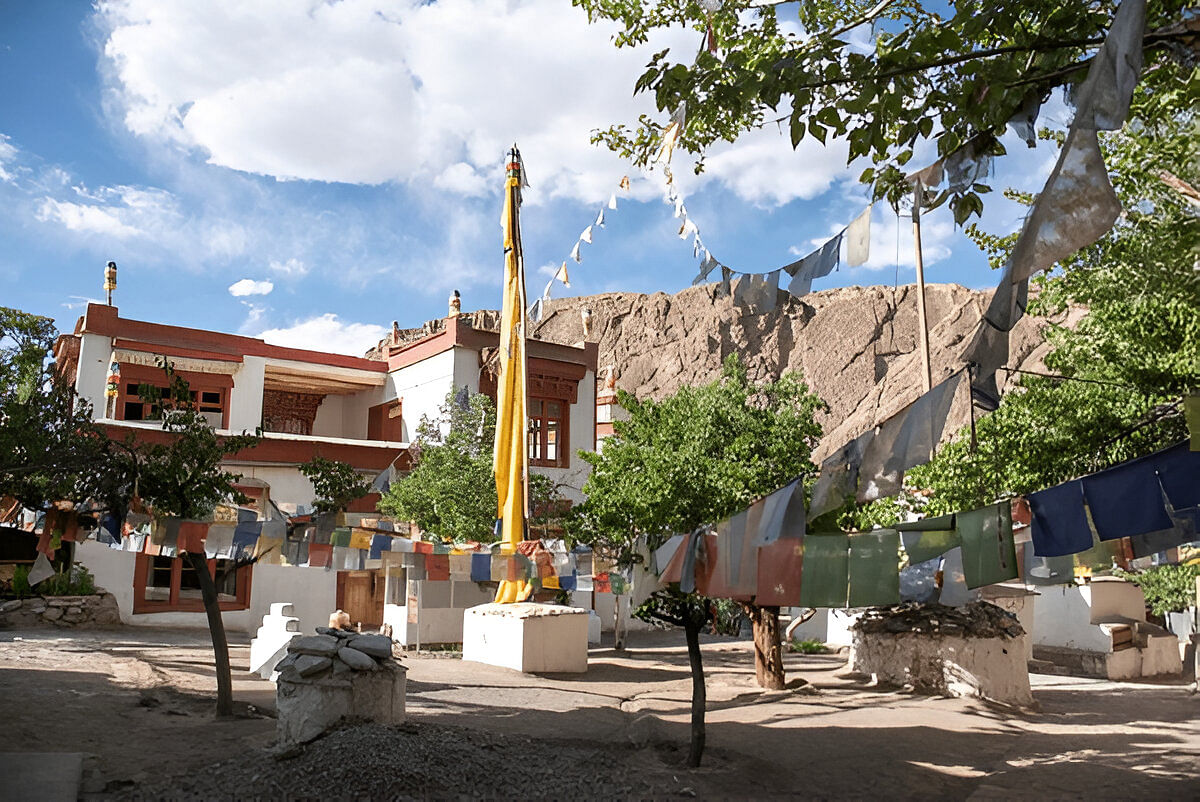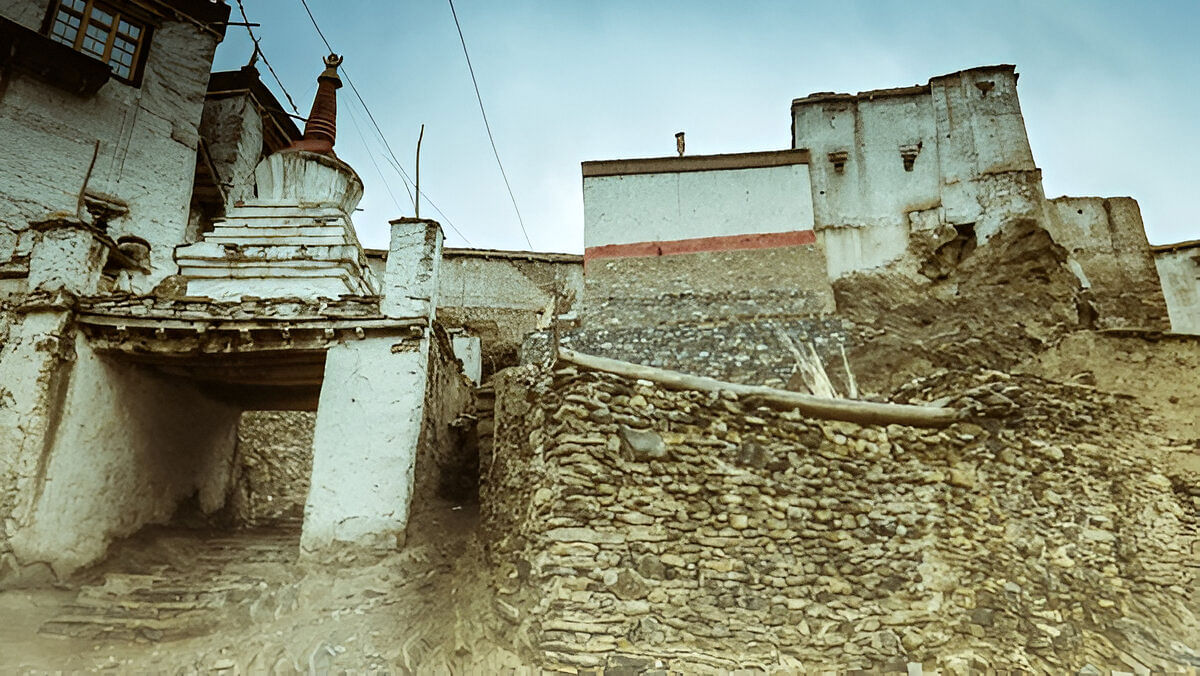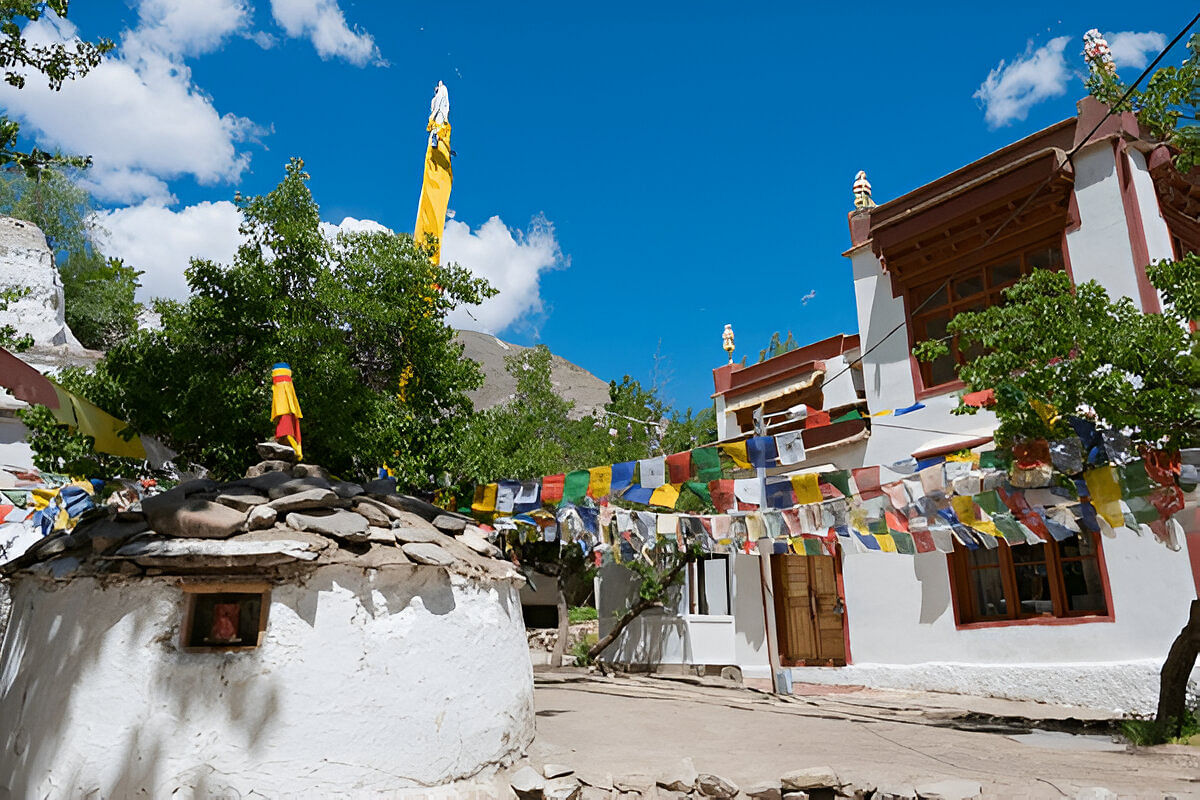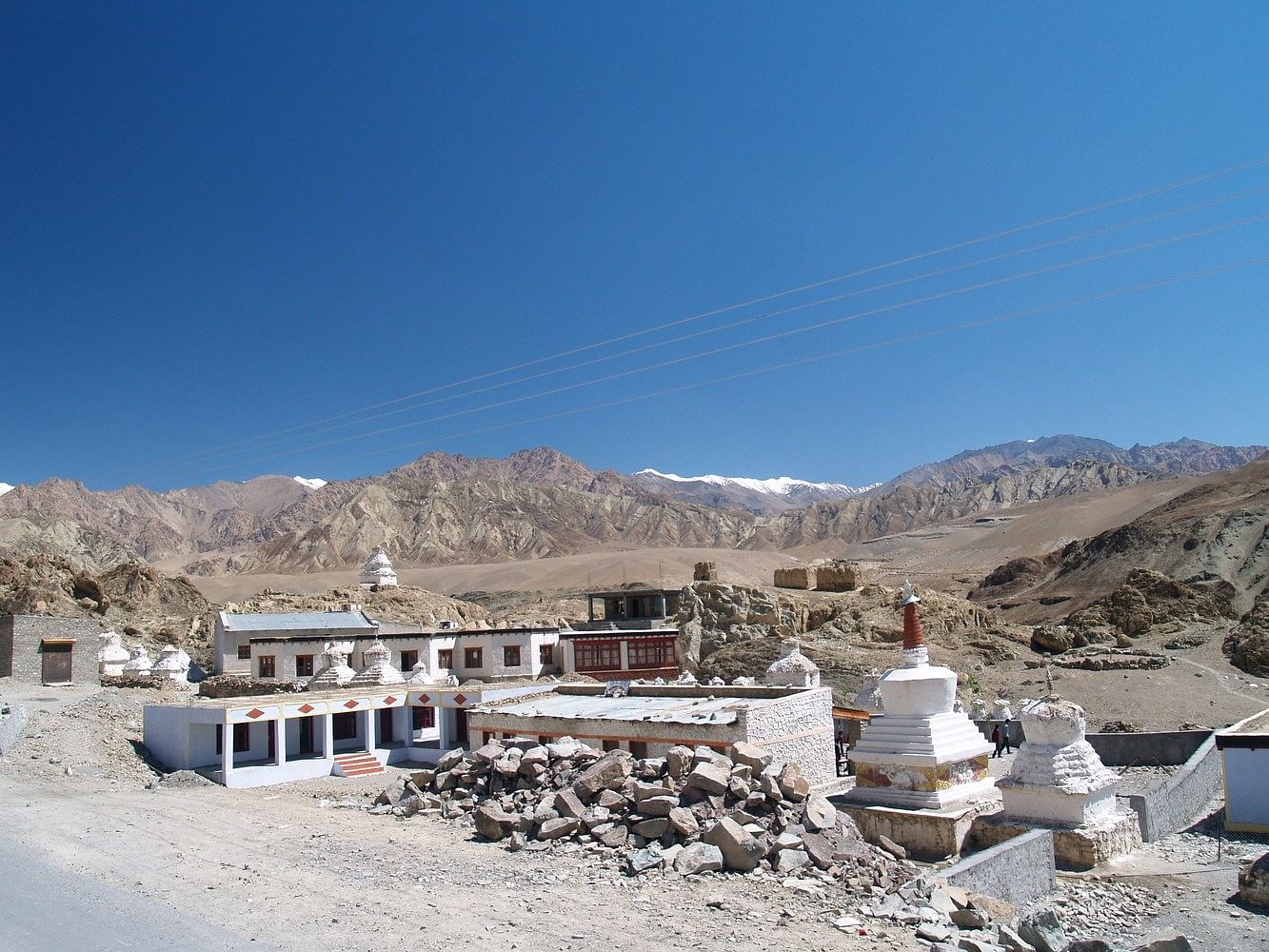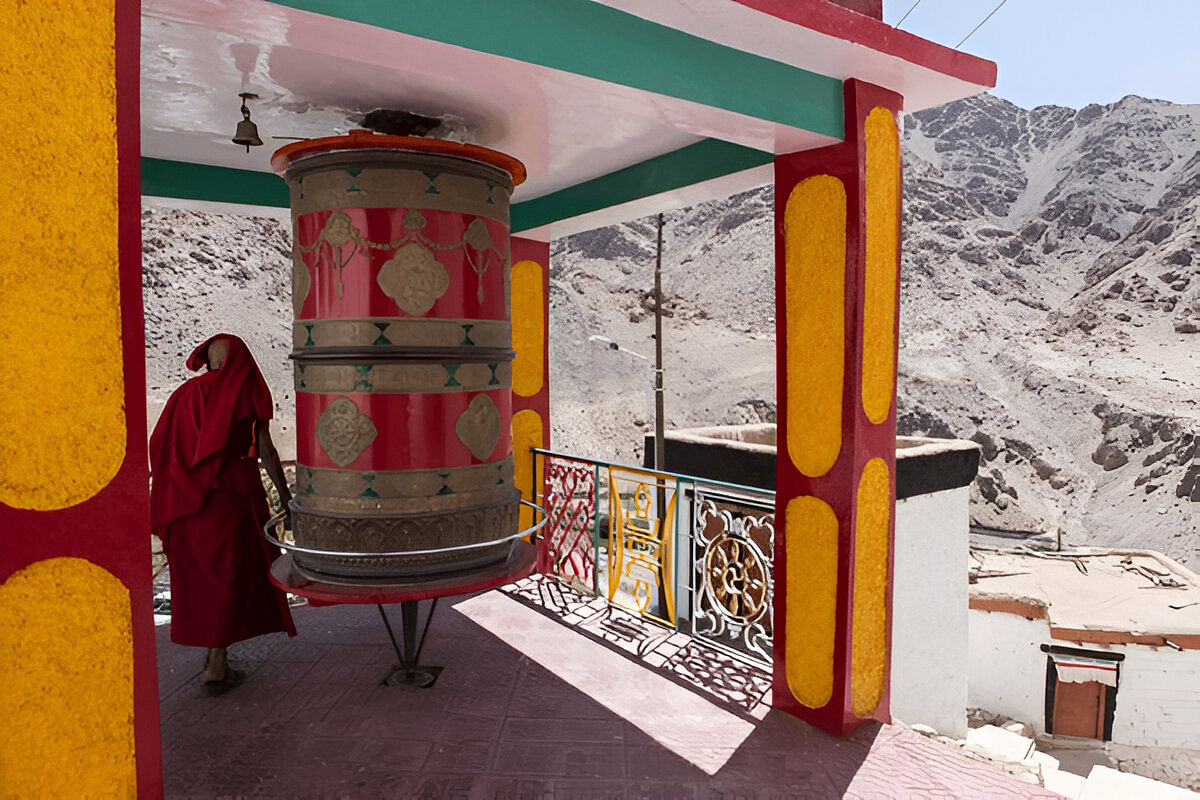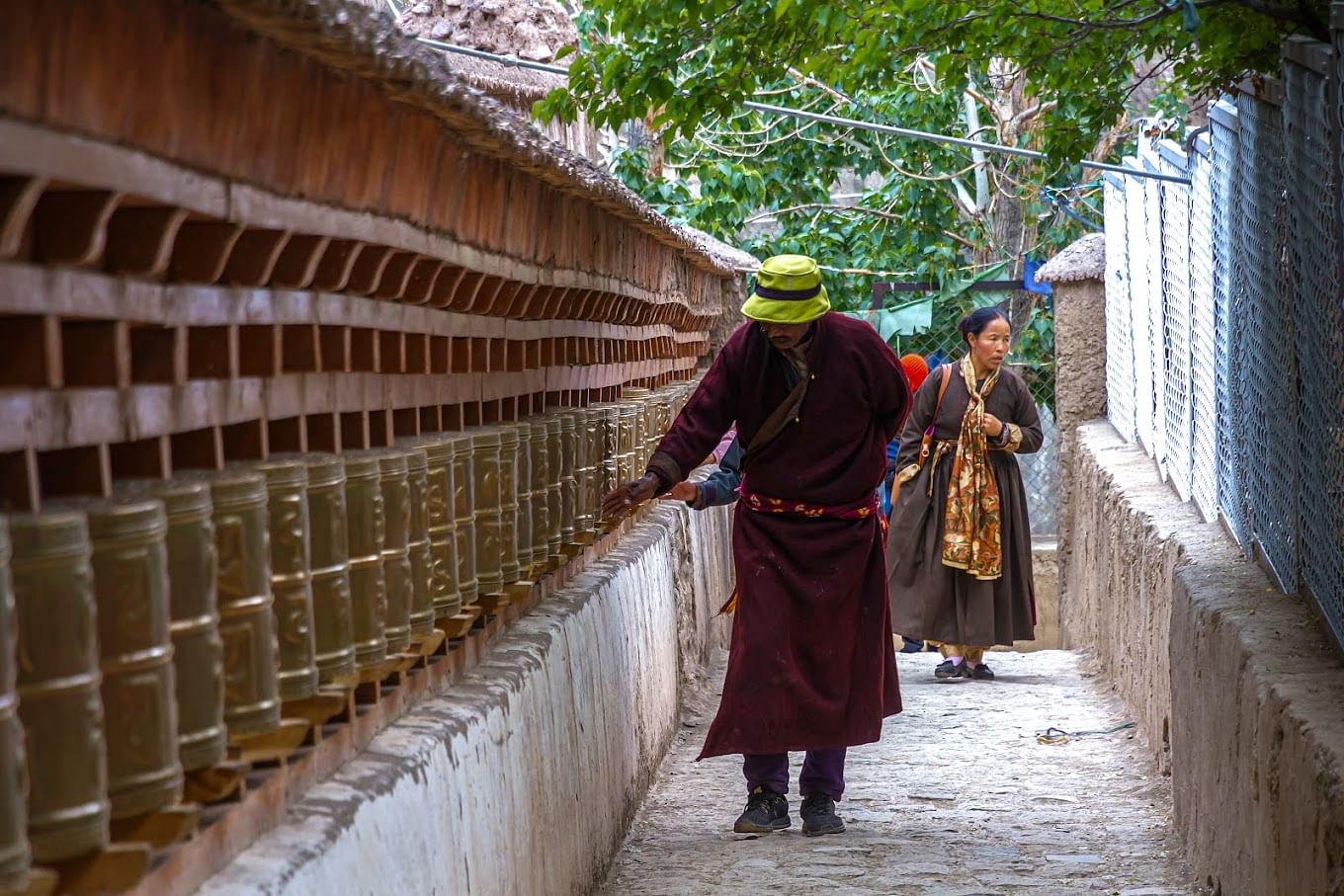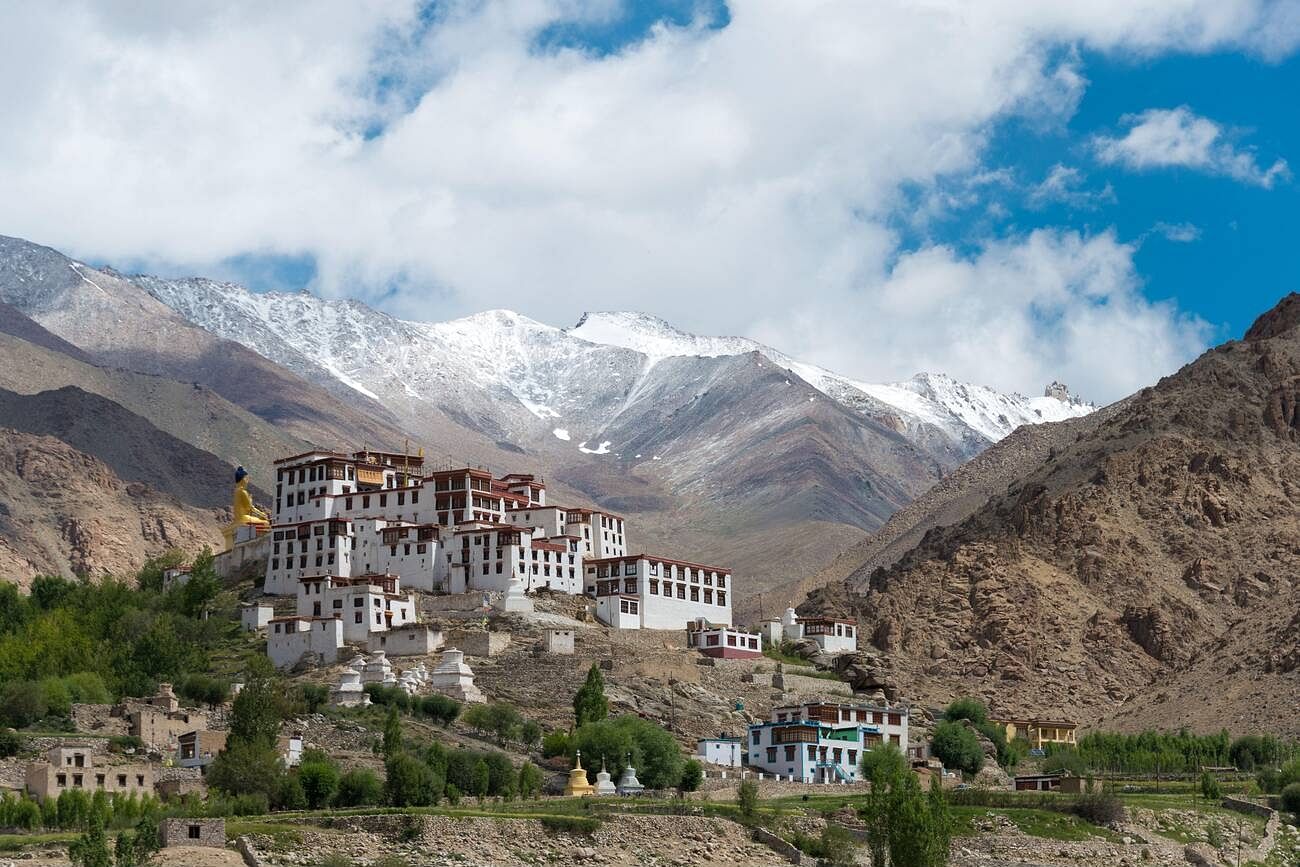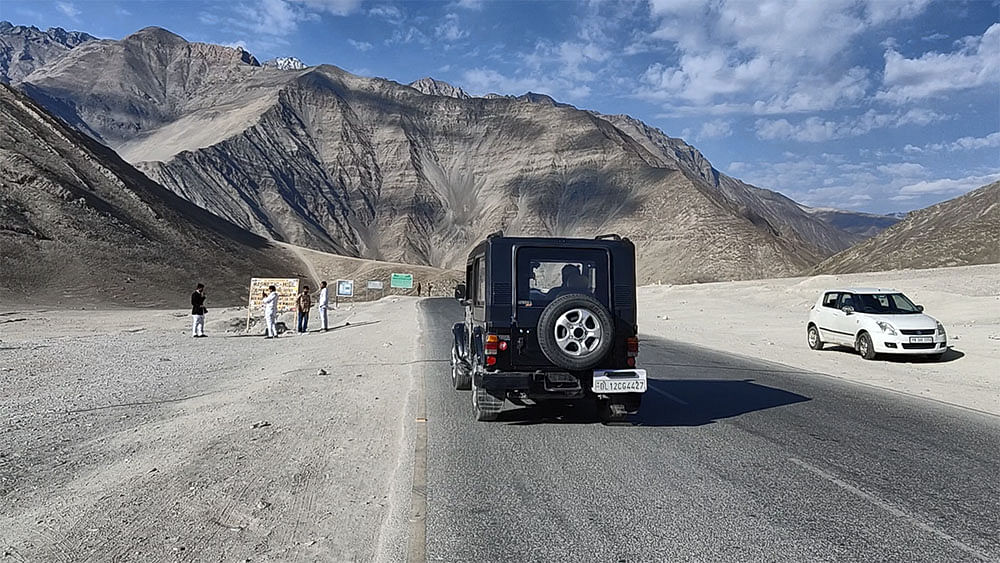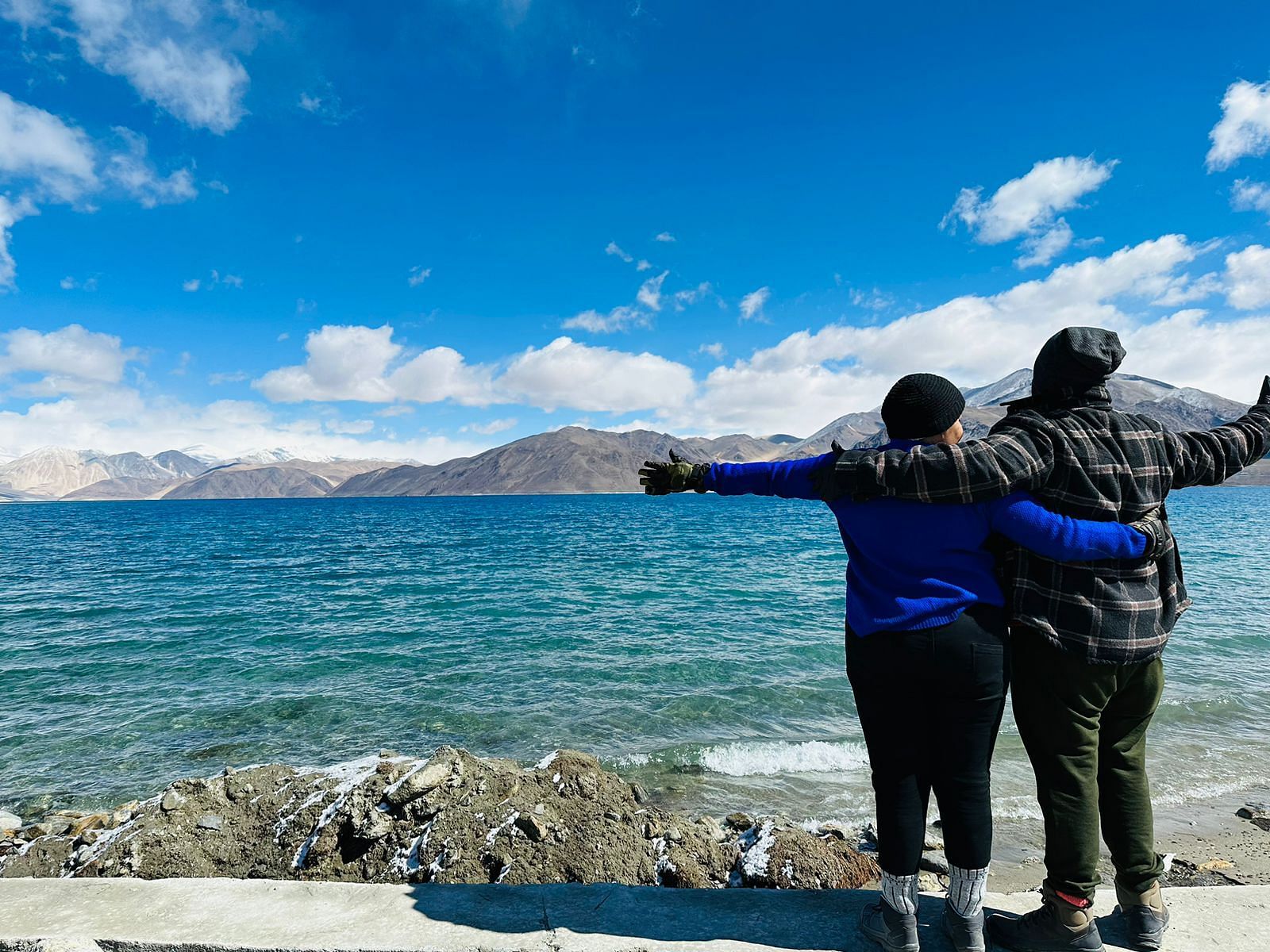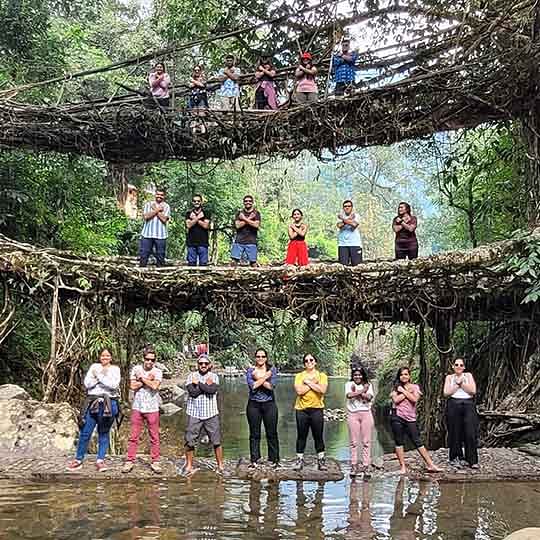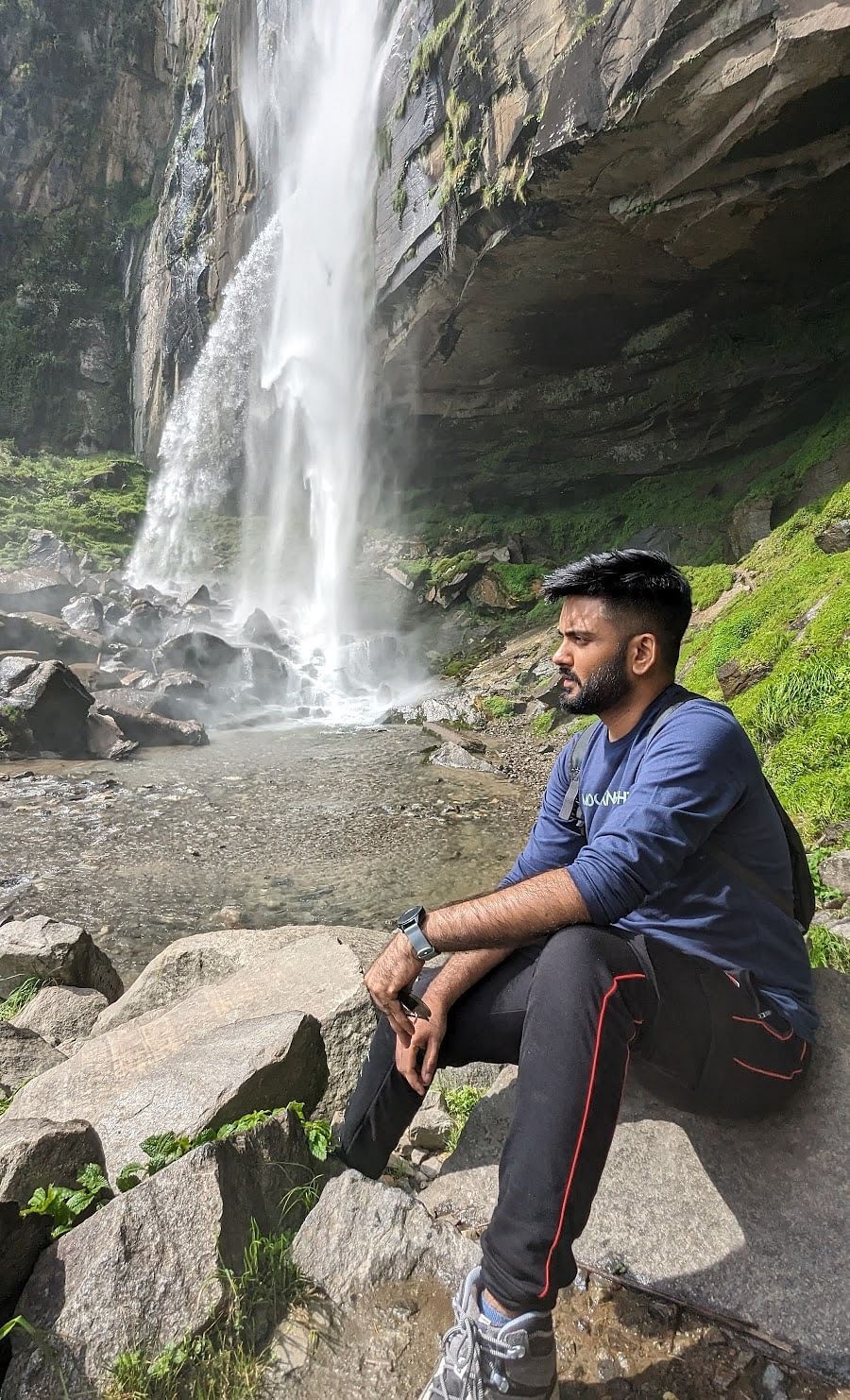If you're planning a trip to Ladakh and want to see something a little different from the usual cliffside monasteries, Alchi Monastery might surprise you. It’s located about 60 km from Leh, right along the Leh–Kargil highway. And unlike most monasteries in the region, this one isn’t perched high on a hill.
Alchi Monastery (Alchi Gompa) is actually more of a monastic complex, made up of several ancient temples and buildings that date back over a thousand years. It's part of the Alchi group of monuments, along with two other villages. Of the three, Alchi is the best known and the most visited—mainly because of the beautiful and surprisingly well-preserved artwork inside. The ancient murals, statues, and wooden carvings give you a real sense of how old and significant this place is.
What’s interesting is that it’s not an active monastery with monks living there. It’s maintained by the monks of Likir Monastery, so it has more of a preserved, heritage-site feel than a busy spiritual hub. But that also means you get to take your time, soak it all in, and really appreciate the craftsmanship and quiet atmosphere. It’s a peaceful stop on your Ladakh bike trip, especially if you enjoy history, art, or just calm places with a story to tell.
History of Alchi Monastery Ladakh
The history of Alchi Monastery dates back over a thousand years, making it one of the oldest monastic complexes in Ladakh. Though the exact founding date isn’t confirmed, inscriptions and murals suggest it was built around 1200 CE. Many believe that the monastery was established by the renowned scholar and translator Rinchen Zangpo, who played a key role in spreading Buddhism across the Himalayan region in the 10th century.
Unlike most monasteries in Ladakh, Alchi isn’t associated with any specific school of Tibetan Buddhism in its early years. Over time, as worship at the site declined, it came under the care of the Gelugpa sect, managed by monks from Likir Monastery.
What really sets Alchi apart is its Indo-Himalayan artwork; especially the intricate wall paintings and clay sculptures made by Kashmiri artists. These artworks make Alchi a unique heritage site and a must-visit for history and art lovers exploring Ladakh.
Best Time to Visit Alchi Monastery
The best time to visit Alchi Monastery is between May and September, when the weather in Ladakh is pleasant and the roads are open. During these months, you’ll get clear skies, comfortable temperatures, and easy access to the region.
Winters in Ladakh (from October to April) can be harsh, with heavy snowfall and road closures, making it difficult to reach places like Alchi. So, if you want to explore the monastery and enjoy the scenic drive along the Leh–Kargil highway, summer and early autumn are your safest bet.
How to Reach Alchi Monastery Ladakh
Location: Alchi, Ladakh 194106
By Road:
Alchi Monastery is about 65 km west of Leh, located on the Leh–Kargil highway. The drive takes around 1.5 to 2 hours and is quite scenic, passing through small villages and stunning mountain views. You can hire a taxi from Leh or include it as a stop on your way to Lamayuru or Kargil.
By Bus:
Local buses and shared taxis sometimes run between Leh and nearby villages, but they may not always stop directly at Alchi. It’s more convenient to hire a private cab or join a group tour from Leh.
By Air:
The nearest airport is Kushok Bakula Rimpochee Airport in Leh, which is well-connected to major cities like Delhi, Mumbai, and Srinagar. From the airport, you’ll need to travel by road to reach Alchi.
Things to See in Alchi Monastery
Alchi Monastery isn’t just one building—it’s a whole complex filled with ancient temples, shrines, and stunning artwork. The Alchi Monastery architecture is a blend of Tibetan and Kashmiri styles, which makes it stand out from most other monasteries in Ladakh. Here's what you shouldn’t miss during your visit:
This is the main prayer hall and one of the oldest parts of the monastery. Inside, you’ll find beautiful wall paintings, mandalas, and images of Buddhas and Bodhisattvas. The original wooden door frame still stands, and the entrance is decorated with frescoes of a thousand Buddhas. Don’t miss the Wheel of Life painting and the powerful guardian figure of Mahakal near the outer gate.
The Sumtsek is a three-storied structure that looks plain from the outside but is full of intricate artwork inside. It houses large clay statues of three Bodhisattvas—Maitreya, Avalokiteshwara, and Manjushri—each over 13 feet tall. Their clothing is decorated with unique painted designs that tell stories from the Buddha’s life and represent Buddhist ideals like compassion, wisdom, and hope.
- Manjushri Temple (Jampe Lhakhang)
This temple features four large seated statues of Manjushri, placed back-to-back and facing in all directions. The setting is simple but symbolic, with a wooden ceiling and a central platform. The temple also includes carvings, colourful frescoes, and depictions of various Buddhas and sacred symbols.
- Lotsawa Lakhang (Translator’s Temple)
This smaller shrine is dedicated to the legendary translator Rinchen Zangpo, who played a big role in spreading Buddhism in the region. It’s a peaceful spot that adds spiritual and historical value to the complex.
The complex includes several ancient chortens, or Buddhist stupas. Some of these date back to the 13th century and still feature faded but beautiful interior paintings. These unique structures, known locally as Kakani Chortens, are an important part of Alchi Monastery architecture.
Timings and Entry Fee of Alchi Monastery
Alchi Monastery is open daily from 8:00 AM to 1:00 PM and again from 2:00 PM to 6:00 PM. The monastery closes for an hour in the afternoon, so it’s good to plan your visit accordingly.
The entry fee is quite reasonable—₹50 for Indian tourists and ₹20 for foreign tourists. Try to visit during the morning hours or early afternoon when the light is better for viewing the murals and taking in the peaceful vibe of the place.
Places to Visit Near Alchi Monastery
While Alchi Monastery is a highlight of Ladakh, there are several fascinating places nearby that are worth exploring. From peaceful monasteries to quirky natural spots, here’s a list of top places in Ladakh you can visit around Alchi.
- Likir Monastery (Likir Gompa)
Located around 20–25 km from Alchi, Likir Monastery sits proudly on a hilltop and is home to a majestic statue of Maitreya Buddha. It offers panoramic views and a peaceful atmosphere, perfect for a short stop filled with history and spirituality.
Roughly 25–30 km away, Basgo was once the capital of Lower Ladakh. The site features striking monastery ruins, old temples, and ancient murals. The blend of history and dramatic landscape makes it an excellent detour for history lovers and photographers.
- Rizong Monastery (Ridzong Gompa)
About 40 km from Alchi, Rizong Monastery is known for its serene isolation and strict monastic rules. Surrounded by rugged cliffs, it’s often referred to as a “paradise for meditation.” There's also a nearby nunnery called Chulichan, adding to its spiritual vibe.
- Lamayuru Monastery (“Moonland”)
Located around 55–60 km away, Lamayuru is one of Ladakh’s most iconic monasteries. Apart from its spiritual appeal, the surrounding “Moonland” terrain—with its crater-like formations—gives it an otherworldly charm. It’s a must-visit for its views, legends, and ancient thangkas.
Just 40 km from Alchi, this is where nature plays tricks on your eyes. At Magnetic Hill, vehicles appear to roll uphill against gravity—it’s a fun, quick stop with a cool photo opportunity.
Around 35–40 km from Alchi, this beautiful Sikh temple is dedicated to Guru Nanak Dev Ji. It’s a peaceful and respectful place where you can learn about Guru Nanak’s journey through Ladakh.
- Sangam (Confluence of Indus & Zanskar Rivers)
Located approximately 30–35 km away, this is where the turquoise Indus and muddy Zanskar rivers meet. It’s a stunning natural sight, and in the right season, you can even try river rafting here.
The Final Words
So yeah, if you are heading to Ladakh with WanderOn and want to see something different from the usual hilltop monasteries, Alchi Gompa is definitely worth a visit. It is peaceful, a little tucked away, and has this quiet charm that stays with you. The artwork inside is seriously impressive, considering it is over a thousand years old. You can take your time here, no need to rush. Just walk around, take it all in, and enjoy the calm. It might not be the most famous spot, but it ends up being one of those places you remember long after the trip.





